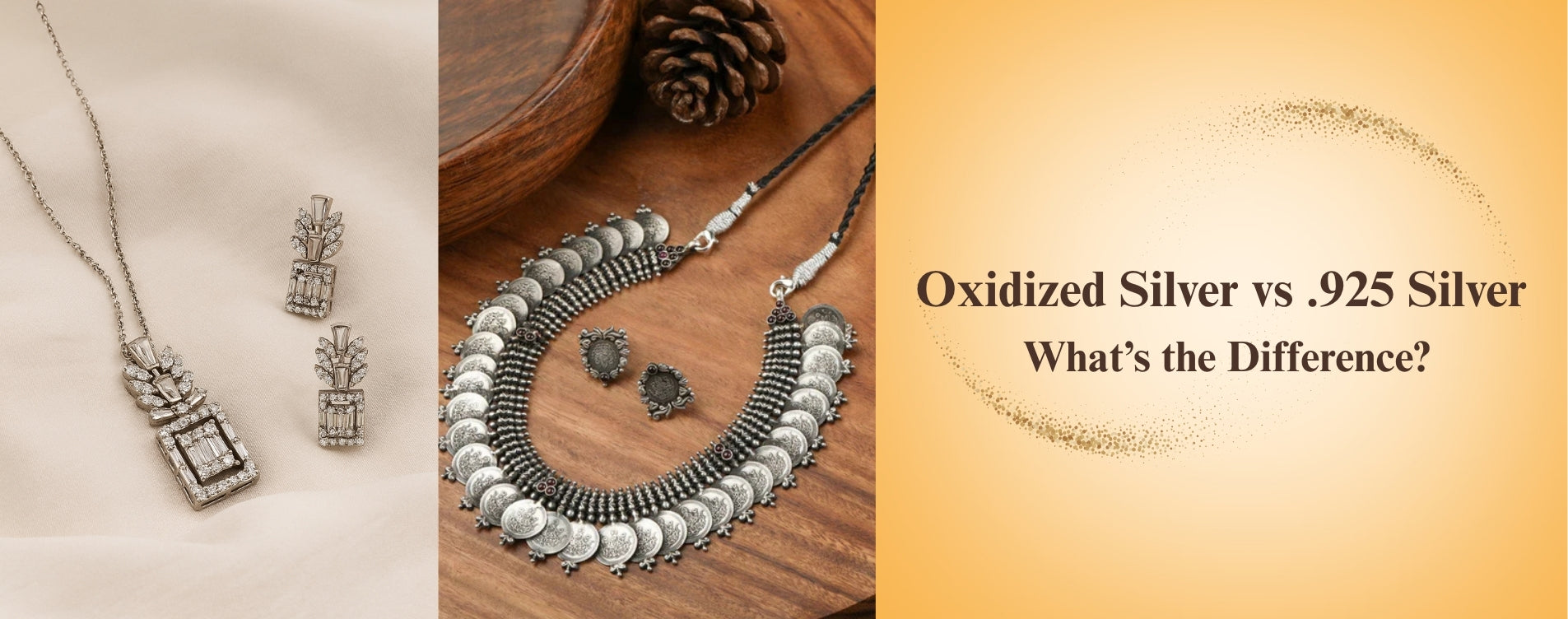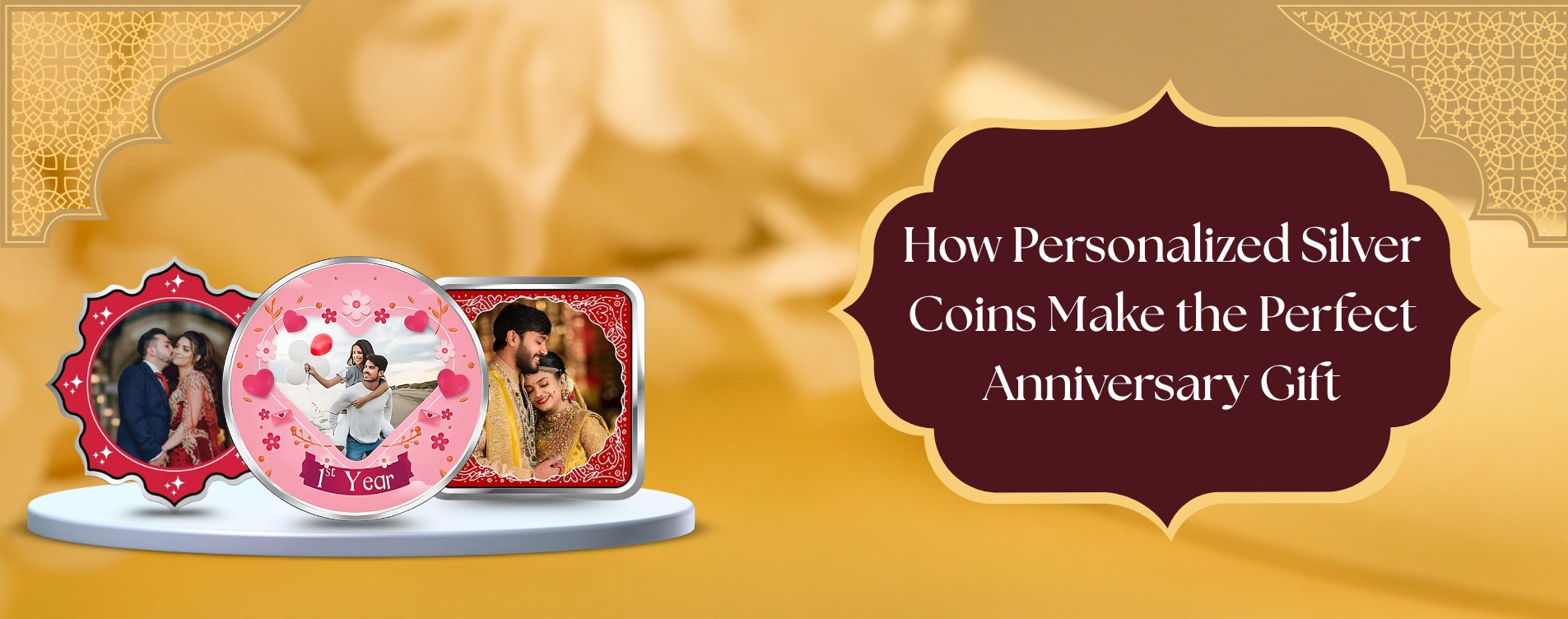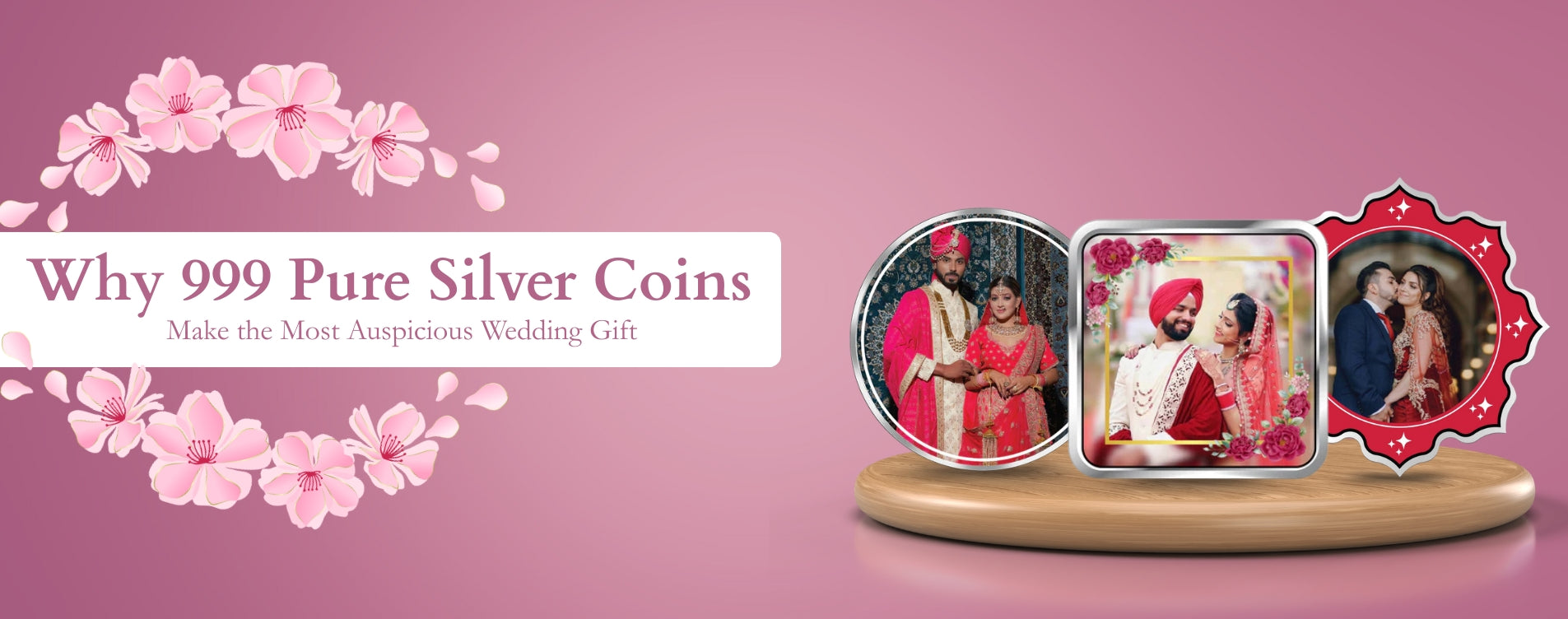
Oxidized Silver vs. 925 Silver: What’s the Difference?
When it comes to silver jewellery, you’ve probably seen two common types — oxidized silver and 925 sterling silver.
Both are made from real silver, but they look different and are used for different styles and purposes.
If you’ve ever wondered what makes them unique, this guide will help you understand the difference in simple words.
What is 925 sterling silver?
925 silver, also known as sterling silver, is one of the most popular and trusted forms of silver used in jewellery making.
The number 925 refers to its composition — it means the metal is made of 92.5% pure silver and 7.5% other metals, usually copper.
Pure silver (99.9%) is too soft for daily wear. It bends and scratches easily.
That’s why a small amount of copper is added to make it stronger and more durable while keeping its bright, shiny appearance.
Key Features of 925 Silver:
- Has a bright white shine and smooth polish.
- Durable and long-lasting for everyday jewellery.
- Can be cleaned and polished to restore its shine.
- Commonly used for rings, bracelets, pendants, chains, and earrings.
Examples of 925 Silver Jewellery:
- Wedding bands and couple rings
- Simple silver chains
- Elegant earrings or bracelets
What is Oxidized Silver?
Oxidized silver is actually sterling silver (925) that has been intentionally darkened using a chemical process — usually with a compound called liver of sulfur.
This creates a blackish or antique finish on the surface of the silver.
The oxidized layer is not a coating or paint — it’s a natural reaction on the silver’s surface that changes its color.
This gives the jewellery a vintage, rustic, or antique look that many people love.
Key Features of Oxidized Silver:
- Has a dark grey or black finish.
- Gives a handcrafted, antique appearance.
- Doesn’t require polishing — its beauty lies in the aged look.
- Often used in ethnic, traditional, or boho-style jewellery.
Examples of Oxidized Silver Jewellery:
- Tribal-style necklaces or jhumkas
- Antique temple jewellery
- Silver anklets and bangles with detailed carvings
- Designer oxidized pendants and earrings
Main Differences Between Oxidized Silver and 925 Silver
|
Feature |
925 Silver (Sterling Silver) |
Oxidized Silver |
|
Appearance |
Bright, shiny white finish |
Dark, blackish-grey antique finish |
|
Composition |
92.5% pure silver + 7.5% other metals |
Same (925 silver), but surface oxidized |
|
Look & Style |
Modern, elegant, and classy |
Vintage, rustic, and ethnic |
|
Maintenance |
Needs regular cleaning to avoid tarnish |
Low maintenance; already darkened |
|
Durability |
Strong and long-lasting |
Similar durability (base metal is same) |
|
Occasions |
Formal, daily wear, western outfits |
Traditional, festive, or artistic looks |
|
Price |
Usually slightly higher due to polishing |
Slightly lower or similar depending on design |
How Is Oxidized Silver Made?
The oxidized look is created through a simple but controlled chemical process:
- The sterling silver piece is exposed to a sulfur compound (like liver of sulfur).
- This creates a chemical reaction with the metal surface.
- The surface layer turns darker, forming a black patina.
Sometimes, artisans polish only the raised parts to highlight the design — this creates a beautiful contrast between shiny and dark areas.
The inner metal remains pure 925 silver — only the outer layer changes color.
Does Oxidized Silver Fade Over Time?
Yes, but slowly.Oxidized silver can fade with friction, water exposure, or polishing, as the dark layer wears off gradually.
However, this is part of its charm — the piece develops a natural, aged look over time.
If you want to maintain the blackish look longer:
- Keep it away from moisture, perfumes, and soaps.
- Store it in a dry place or airtight pouch.
- Avoid rubbing it with silver polish or cleaning cloths.
How to Take Care of Each Type
Caring for 925 Silver:
Store in a zip-lock bag or anti-tarnish pouch.
Clean occasionally using a soft silver polishing cloth.
Avoid contact with water, lotions, or perfumes.
If tarnished, clean using mild soap and water or a silver cleaner.
Caring for Oxidized Silver:
Avoid using silver polish — it will remove the dark layer.
Simply wipe with a dry, soft cloth.
Store in a cool, dry place away from humidity.
Embrace the natural aging — it adds more character!
Which One Should You Choose?
That depends on your personal style and purpose.
Choose 925 Sterling Silver if you love:
- Shiny, polished jewellery
- Minimal, elegant, and timeless designs
- Something suitable for both daily wear and formal occasions
Choose Oxidized Silver if you prefer:
Artistic, ethnic, or vintage looks
Jewellery that stands out and tells a story
Low-maintenance accessories that don’t need polishing
Both are authentic silver, and both can last a lifetime with proper care.
The difference is purely in the appearance and style you prefer.
Can Oxidized Silver Be Turned Back Into Shiny Silver?
Yes! Since oxidized silver is just 925 silver with a dark surface layer, it can be polished or cleaned to restore its original shine.
However, most people choose to keep the oxidized look because it adds depth and uniqueness to the piece.
FAQs About Oxidized Silver & 925 Silver
1. Is oxidized silver real silver?
Yes! Oxidized silver is made from real 925 sterling silver. Only the surface is darkened through a chemical reaction for that antique effect.
2. Does oxidized silver tarnish?
Not in the same way as plain silver. Since it’s already darkened, mild tarnish doesn’t change its appearance much.
3. Can I wear oxidized silver every day?
Yes, you can — just avoid direct contact with water or harsh chemicals to keep its color intact.
4. Which one is better for gifting?
Both make great gifts! 925 silver is perfect for modern, classy gifts (like anniversaries or office wear), while oxidized silver is great for festive, traditional, or artistic occasions.
5. Can I mix oxidized and sterling silver jewellery?
Absolutely! Many people love pairing shiny silver chains with oxidized pendants or vice versa for a balanced, trendy look.
Final Thoughts
Both oxidized silver and 925 sterling silver are real silver — the difference lies in their finish and personality.
If you love bright, elegant jewellery, 925 silver is the way to go.
If you prefer a bold, artistic, or antique look, oxidized silver is perfect for you.
Either way, silver is timeless — whether it shines bright or tells a story through its dark, antique charm.



